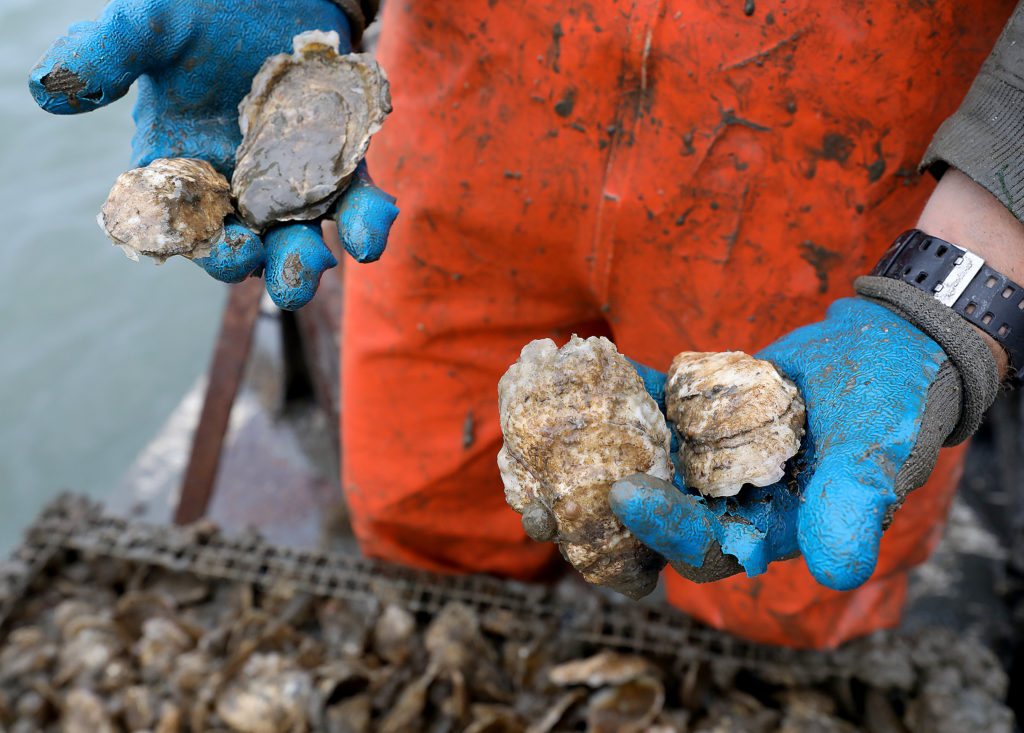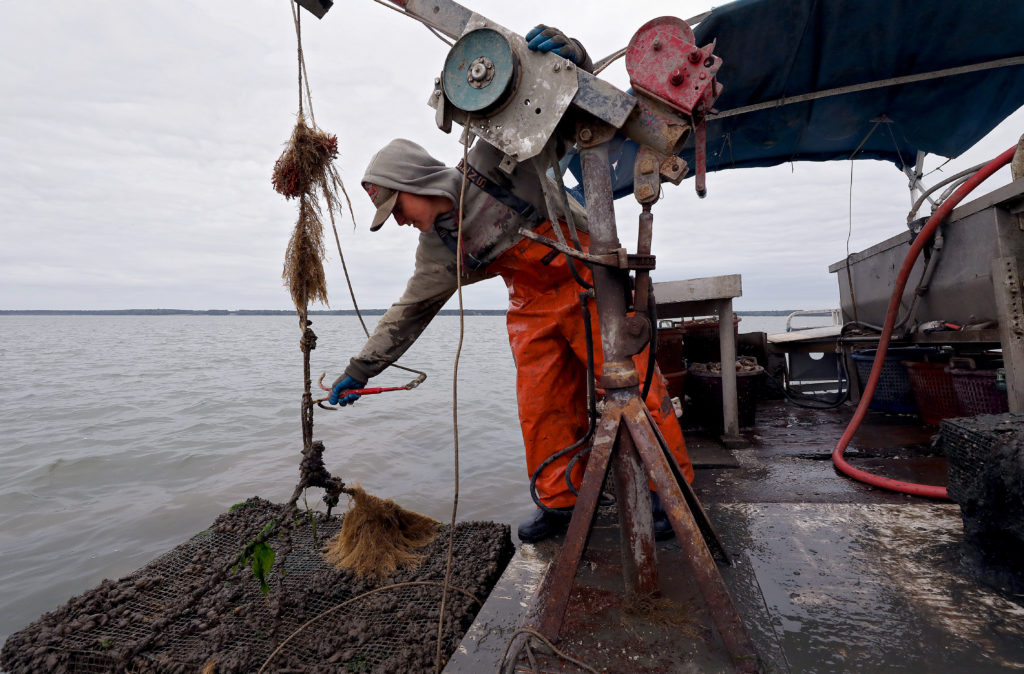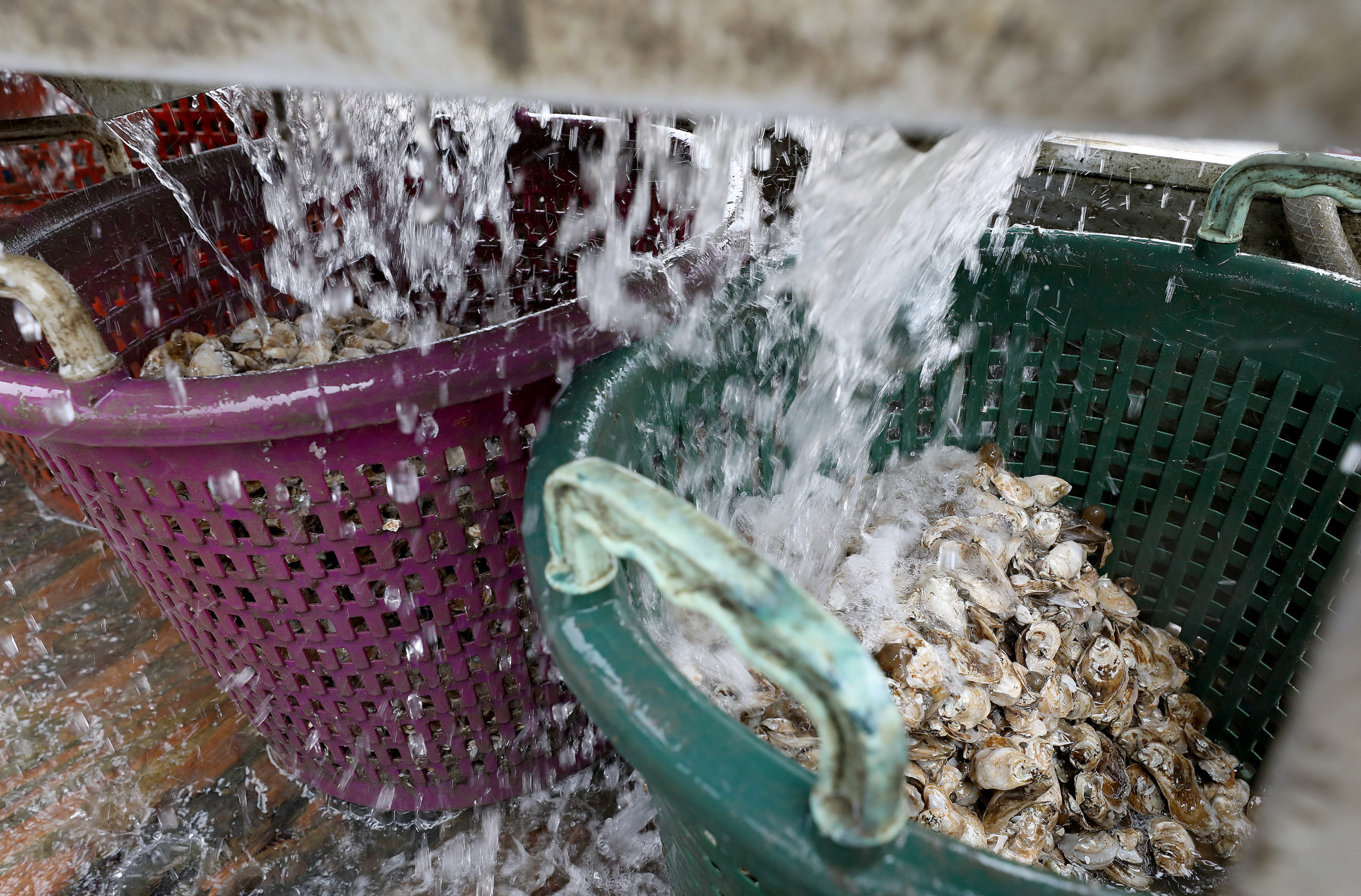As an executive in the wood industry, Mark Vann spent long days inside a windowless manufacturing plant. Sometimes he’d check with the forklift driver to see if it was raining outside.
Vann doesn’t ask about precipitation anymore; he works in all kinds of it as the owner of Cappahosic Oyster Company. He’s jokes that he’s no “fair weather harvester,” either
You’ve heard about rain, sleet and mail delivery? It applies to Vann’s philosophy on harvesting oysters. The cooler the better, says Vann, wearing a wide-brimmed hat with denim overalls. Bring on the gusty winds and temperatures in the single digits, he says on a mild fall Friday morning.
“I take it as a challenge,” he says, grinning wide, standing on the same pier he skipped on as a kid. “When the going gets tough, you know what they say. I love it if it’s nasty out here.”
“Out here” would be the same seashore backyard where Vann fished and crabbed growing up in Gloucester. He points to his left to where Bunting Oyster House once stood.
“I worked for Mrs. Bunting,” he said. “You might say I’ve come full circle.”
He bought the house next door to the one he grew up in — his parents remain his neighbors — and is busy constructing a second house on the same plot, a downsized version for him and his wife, Marcia Berman, to move into next year.
Vann, 55, had to move away from the water to appreciate it. After graduating from Virginia Tech with a degree in forest products, he headed to the mountains in Georgia for a job in wood manufacturing.
He loved it. So did Marcia. But there’s something in the water. He knew one day it would call him home.
“The mountains are fun. The water, that’s home. That small. The birds. You can see everything,” he says, gesturing to Mathews County in one direction, Camp Peary in another.

A job in medical sales returned him to his Gloucester roots in 2013. By then, oysters farmers understood the science to make harvesting the shellfish profitable again. For years, disease made that impossible in the Chesapeake Bay, which had been stripped of a significant portion of its oyster population.
Vann can remember the moment when, standing in the sand, it was as if he was seeing oysters for the first time. Little ones. Big ones. They began to form in abundance, cemented to the rocks along the brackish river water.
Lightbulb moment.
“The oysters are coming back to the Chesapeake Bay all on their own!”
“That was pretty exciting for me,” he says. “I had this vision. Lease these grounds. One day you can play around with it so you can retire.”
What started as a weekend hobby — he planted 50,000 — evolved into Cappahosic Oyster Company three years later.
Today when asked how many he plants, he shrugs. “Millions.”
Success didn’t come overnight. Vann knew enough not to expect a profit for a couple of years at best. Laid off from the medical sales job abruptly, he needed flexibility to grow the business, but he couldn’t forgo a steady income. So he built boats — a 60-foot catamaran and 24-foot coastal cruiser.
Mark Vann can seemingly construct anything.
He’s built a 2-ton crane, a sorter, a 24-foot barge — equipment most any other entrepreneur would certainly buy.
“Mark is the hardest working person I’ve ever met,” says Berman, who brings her own gift to the business as a marine scientist with the Virginia Institute of Marine Science for the last 33 years.

Today Cappahosic Oysters are on dozens of menus in the finest seafood houses from Yorktown to Charlottesville. A recent customer who turned 72 shucked that same number of oysters at one sitting to celebrate that milestone. Shipping out of state accounts for 50% of business.
Customers can’t get enough of the oysters Vann is remiss to describe.
“I don’t do chef talk,” he says.
Credit Cappahosic’s success to a plethora of factors —the salinity in the York River, the seed from a local hatchery, the constant circulation of water, tedious husbandry work, TLC Vann provides until they go to market.
Vann won’t brag about his oysters being the best, but sales speak to their scrumptious flavor.
Chefs with a preference for the smaller petite oysters swear by his “Minnie Pearls,” clean, crisp and easy to shuck.
“What trumps taste? Shuck ability,” Vann says. “If a restaurant can’t shuck your oyster and the shell crumbles off and chefs have to throw one in 10 in the trashcan, they’re going to go for an oyster that shucks easier. That’s something we’ve excelled at.”
Cappahosic’s most requested oyster, the Victory Point, is grown to market size and boasts a beautiful cup, perfect for the half shell market.
Those who go the raw route rave about High Mark oysters; they can reach 5 inches in size. “They’re as big as your hand,” Vann says.
Vann could talk oysters all day, though he’s equally passionate about restoring the Bay and taking care of the environment. He’s creating a natural reef at the same time he’s expanding his business.
He apologizes for the mess, but he’s building again — another barge, a crane. Multiple projects around his property are in varying stages of completion. “Work smarter not harder” is the logic behind mechanizing processes to eliminate the labor intensive work. He’s grateful for his crew — three guys who started as teens and are now adults invested in the ecologically sensitive growing processes that guides Vann’s business practices.
Vann figured he’d be on easy street when with the business became established. He’s never worked longer hours.
He’s never enjoyed anything more.
“I never sit inside,” he says. “I’m always outside. Every day is different. You can see the seasons change before you.
“Maybe it’s a sickness some of us have. But I love it.”
